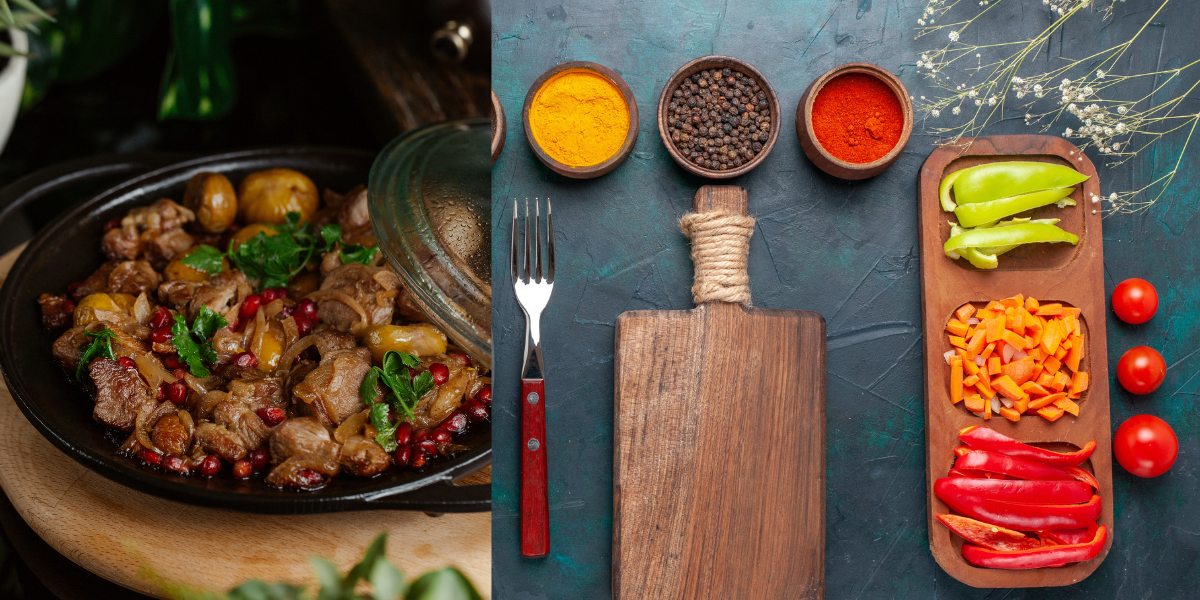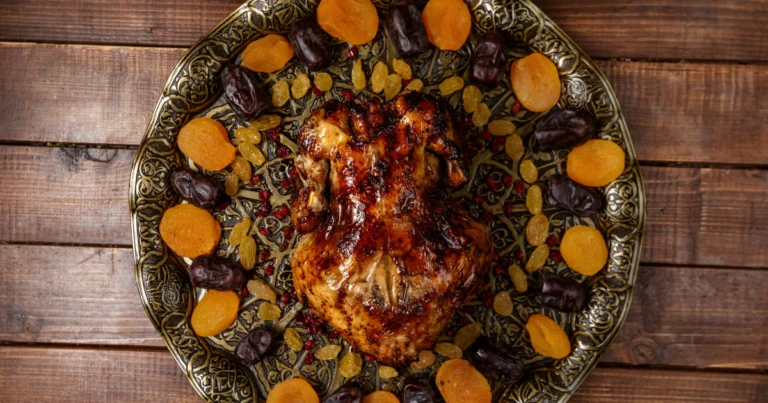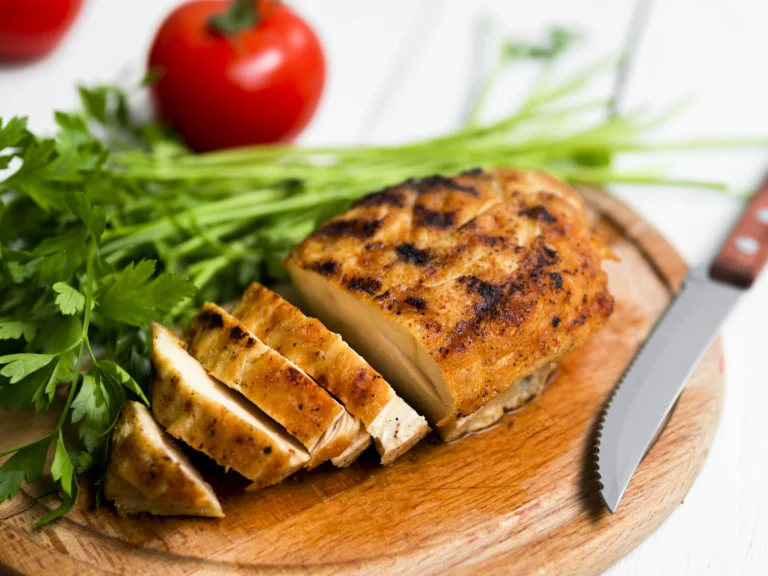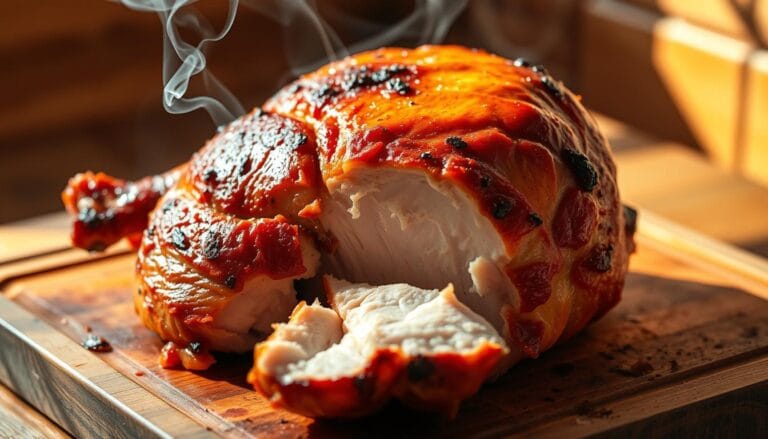Juicy Turkey Neck Recipe: Tender, Savory Goodness
Craving a hearty meal that delivers rich, melt-in-your-mouth results? This guide unlocks the secrets to transforming an underrated ingredient into a flavor-packed turkey neck recipe. Often overshadowed by other cuts, these protein-rich pieces shine when prepared with care—offering a budget-friendly alternative to pricier meats like oxtails.
Perfect for Sunday dinners or cozy gatherings, this method ensures fall-off-the-bone tenderness. You’ll learn how to layer spices, build depth through slow cooking, and create a dish that’s both comforting and unforgettable. Whether you’re new to working with this cut or a seasoned home chef, the process stays straightforward.
We’ll walk through marinating techniques to lock in moisture, searing tips for caramelized edges, and simmering methods that infuse every bite with savory goodness. By the end, you’ll have a meal that’s sure to become a family favorite—proof that great turkey neck recipe doesn’t need to be complicated.
Table of Contents
Introduction
Discover how humble ingredients create extraordinary meals with this timeless cooking method. For generations, cooks worldwide have prized these collagen-rich cuts for their ability to absorb flavors while staying budget-friendly. From Southern soul food to West African stews, they’ve anchored hearty dishes that warm both body and spirit.
Our approach modernizes tradition without losing its soul. You’ll balance smoky paprika with aromatic thyme, then slow-cook until the meat slides effortlessly off the bone. As chef Marcus Samuelsson once noted:
“The best meals honor history while inviting innovation.”
Follow our tested steps to achieve perfection:
| Traditional Approach | Modern Twist | Result |
|---|---|---|
| 6-hour simmering | 3-hour braise | Same tenderness |
| Basic seasonings | Layered spice blends | Complex flavor |
| Stovetop only | Oven-safe methods | Crispy finish |
Whether you’re reviving family traditions or starting new ones, detailed guidance ensures success. We’ll walk through each stage—from selecting the best cuts to mastering the simmer—so you can confidently create dishes that delight.
Understanding Turkey Necks
Unlock the potential of an often-overlooked ingredient that brings both value and depth to your cooking. Whether you’re crafting soups, stews, or braises, this cut offers versatility that shines across cuisines. Let’s explore what makes it a standout choice for flavor-focused meals.
Varieties and Smart Swaps
Look for plump, pink pieces with minimal odor—signs of freshness. Frozen options work well if thawed properly, but fresh cuts from local butchers often deliver superior texture. If unavailable, chicken necks or oxtails make suitable substitutes, though they may require adjusted cooking time.
Why choose this option? It costs 40-60% less than premium cuts while adding comparable richness to broths. A study by the American Culinary Federation notes its growing use in professional kitchens for budget-friendly menu development.
Nutrition and Taste Advantages
Nutrition of turkey neck Packed with 14g of protein per 3-ounce serving, this ingredient also delivers collagen for joint health. Its natural fats melt during cooking, creating a velvety mouthfeel without heavy greasiness. Simmering releases deep umami notes that elevate sauces and grains.
For best results, allow 30 minutes to 4 hours for marinating. Quick prep takes just 15 minutes before slow cooking transforms tough fibers into tender bites. Pair with aromatic vegetables and a splash of apple cider vinegar to maximize flavor extraction in your broth.
Marinade Magic
Transform ordinary cuts into extraordinary meals with a well-crafted marinade. The right blend of ingredients acts like a flavor conductor, amplifying taste while breaking down tough fibers. This step isn’t optional—it’s the foundation for succulent results.
Key Marinade Ingredients
Start with ginger paste for its zesty kick and natural tenderizing enzymes. Tomato paste adds subtle sweetness and helps caramelize surfaces during cooking. A splash of browning sauce creates rich color depth, while smoked paprika delivers earthy warmth.
Don’t skimp on salt—it opens pores in the meat for better flavor absorption. Fresh thyme or rosemary introduces herbal brightness. Combine these with olive oil and apple cider vinegar to balance acidity and fat content.
Marinating Time and Techniques
Mix all components in a bowl with a whisk until smooth. Submerge the meat completely, massaging the blend into every crevice. Cover tightly and refrigerate for at least three hours—overnight marination maximizes flavor penetration.
Add a tablespoon of water if the mixture feels too thick. Turn the pieces every 90 minutes to ensure even coating. As chef Vivian Howard advises:
“Patience here pays dividends in every bite.”
Proper seasoning at this stage reduces the need for heavy salting later. The acids and salts work together to break down proteins gently, ensuring fork-tender results after slow cooking.
Slow-Cooked Turkey Necks with Savory Gravy
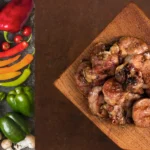
This tender, slow-cooked turkey neck recipe transforms a humble cut into a comforting soul food classic. With a bold marinade, deep sear, and long simmer, the meat turns fall-off-the-bone tender and flavorful. Perfect for Sunday dinners or cozy weeknights, it's budget-friendly, protein-rich, and loaded with down-home flavor. Serve with rice, mashed potatoes, or grits to soak up every drop of the savory gravy.
- Dutch oven or heavy pot
- Mixing bowl
- Tongs
- 2 lbs turkey necks (cleaned and patted dry)
- 2 tbsp tomato paste
- 1 tbsp ginger paste
- 1 tbsp browning sauce
- 1 tsp smoked paprika
- 1 tsp kosher salt
- ½ tsp black pepper
- 1 tsp fresh thyme or ½ tsp dried thyme
- 2 tbsp apple cider vinegar
- 2 tbsp olive oil
- 2 cups chicken broth (plus more as needed)
- 1 small onion (sliced)
- 3 garlic cloves (crushed)
- 2 bay leaves
- Optional 2 tbsp cornstarch + 3 tbsp cold water (for gravy)
- Marinate the Turkey Necks : In a large bowl, mix tomato paste, ginger paste, browning sauce, paprika, salt, pepper, thyme, vinegar, and olive oil. Whisk until smooth. Add turkey necks and coat well. Cover and marinate in the fridge for at least 3 hours, preferably overnight.
- Sear the Meat : Heat a Dutch oven or heavy-bottomed pot over medium-high heat. Add oil and sear the marinated turkey necks in batches until browned on all sides. Remove and set aside.
- Deglaze and Simmer : Add sliced onion to the pot and sauté for 2–3 minutes. Return turkey necks to the pot. Pour in enough chicken broth to cover the meat halfway. Add garlic and bay leaves. Bring to a boil, then reduce heat to low.
- Slow Cook : Cover and simmer gently for 2.5 hours, checking broth levels every 45 minutes. Add more broth as needed. For thicker sauce, uncover for the final 20 minutes of cooking.
- Make the Gravy (Optional) : Remove turkey necks and set aside. In a small bowl, mix cornstarch with cold water to form a slurry. Whisk into simmering broth until thickened (about 1–2 minutes).
- Serve and Enjoy : Return turkey necks to the sauce, spoon over rice or mashed potatoes, and serve hot with your favorite sides.
Marinating Tip: Marinate overnight for maximum flavor absorption.
Make-Ahead: The dish tastes even better the next day. Store in the fridge and reheat with a splash of broth.
Gravy Variation: Add a splash of heavy cream for a richer, smoother gravy.
Alternative Cuts: Substitute with chicken necks, duck necks, or oxtails. Adjust cooking time as needed.
Optional Add-ins: Bell peppers, celery, or carrots add extra depth and texture.
Mastering the Turkey Neck Recipe: A Step-by-Step Guide
Turn up the heat and let your dutch oven work its magic. After marinating, pat the turkey necks dry with paper towels—this ensures a better sear later. Place them in your preheated pot, reserving any leftover marinade.
Pour chicken broth into the pot until it covers the meat halfway. Add remaining marinade and 1 tsp kosher salt, stirring gently. Crank the burner to high until bubbles form rapidly at the edges—this signals it’s time to reduce the heat.
- Cover the pot tightly once the liquid reaches a rolling boil
- Simmer on low for 2.5 hours, resisting the urge to peek—consistent temperature matters
- Test tenderness by poking with a fork; meat should separate effortlessly
Chef’s tip: Add splashes of broth if the liquid drops below halfway. Proper seasoning builds layers of flavor as collagen breaks down into silky richness. Your patience rewards you with fall-apart texture that holds its shape until touched.
For deeper flavor, uncover during the last 20 minutes to thicken the sauce. Serve straight from the pot, ladling aromatic juices over steamed rice or mashed potatoes. This method transforms humble ingredients into soul-warming meals worth every minute.
Searing and Browning Techniques
The foundation of unforgettable flavor begins long before simmering starts. Proper searing creates a caramelized crust that locks in juices and builds complex tastes. This step separates good meals from exceptional ones—don’t rush it.
Essential Tools for Searing
Your choice of equipment matters. A heavy-bottomed pot or cast-iron dutch oven distributes heat evenly, preventing hot spots that cause burning. Pair it with a high-smoke-point oil like avocado or grapeseed—these handle high temperatures without turning bitter.
Follow this method for perfect browning:
- Pat pieces dry—moisture steams instead of searing
- Preheat your pot over medium-high heat for 3 minutes
- Add just enough oil to coat the surface
Wait until the oil shimmers before adding meat. Arrange pieces in a single layer, leaving space between them. Crowding lowers the pot’s temperature, leading to uneven cooking. Resist flipping until you see browned edges—usually 4-5 minutes per side.
Chef’s tip: Work in batches if needed. As culinary scientist Harold McGee explains:
“Maillard reaction occurs best between 280-330°F—patience here unlocks hundreds of flavor compounds.”
Once turkey necks seared , deglaze the pot with broth to capture every bit of flavor. This golden foundation will elevate your entire dish, proving that great meals start with smart techniques.
Cooking Methods Explored
Your cooking gear shapes flavor as much as your ingredients do. Choosing between appliances affects texture, time, and taste—each method offers distinct advantages. Let’s break down how to maximize your tools for mouthwatering results.

Heat Source Showdown
| Method | Time | Flavor Profile | Best For |
|---|---|---|---|
| Dutch Oven | 3-4 hours | Rustic, layered | Rich sauces |
| Pressure Cooker | 1 hour | Intense, concentrated | Quick meals |
| Oven | 2.5-3 hours | Even, caramelized | Crispy finishes |
A Dutch oven builds depth through gradual evaporation, ideal for reducing stock into velvety sauce. Pressure cookers cut cooking hours by 70% but require careful liquid measurement. Oven roasting creates crispy edges while keeping interiors juicy.
Mastering Slow Simmers
Low heat transforms collagen into gelatin, yielding fork-tender meat. Follow these steps for success:
- Check liquid levels every 45 minutes—add chicken broth if needed
- Skim excess fat after 2 hours to prevent greasiness
- Stir in tomato paste during the last hour for richer color
Chef Thomas Keller emphasizes:
“Time is your ally when developing complexity in sauces.”
For pressure cooking, deglaze pots thoroughly to incorporate browned bits into the sauce. Each way delivers unique rewards—choose based on your schedule and desired outcome.
Creating a Rich, Savory Broth
The soul of any great dish lies in its liquid foundation—a broth that carries layers of flavor in every spoonful. Start by reserving those golden-brown bits left after searing. These caramelized treasures hold concentrated taste that transforms ordinary stock into something extraordinary.
Homemade Gravy and Slurry Preparation
Once your turkey necks finish cooking, set aside 1 cup of broth. For velvety gravy, mix 2 tbsp cornstarch with 3 tbsp cold water in a bowl. Whisk this slurry into simmering liquid until it thickens—about 90 seconds.
Enhance depth with 3 crushed garlic cloves and 2 bay leaves during the final simmer. Chef Jacques Pépin advises:
“A good sauce marries all elements—never let one flavor shout.”
Flavor Boosters: Herbs and Spices
Customize your broth with these additions:
| Ingredient | Effect | Best Added |
|---|---|---|
| Extra garlic | Bold aroma | Last 20 minutes |
| Thyme sprigs | Earthy notes | Early simmer |
| Black peppercorns | Subtle heat | With bay leaves |
Store leftovers in an airtight container for up to 4 days. Freeze portions in smaller airtight containers for quick weeknight meals. Always set aside ½ cup broth before thickening—it’s perfect for reheating without losing moisture.
Side Dishes and Serving Pairings
Complete your meal with sides that elevate every savory bite. When you serve turkey necks recipe, balance their hearty flavor with bright, textured accompaniments. Collard greens bring earthy bitterness that cuts through richness, while creamy mashed potatoes soak up juices perfectly.
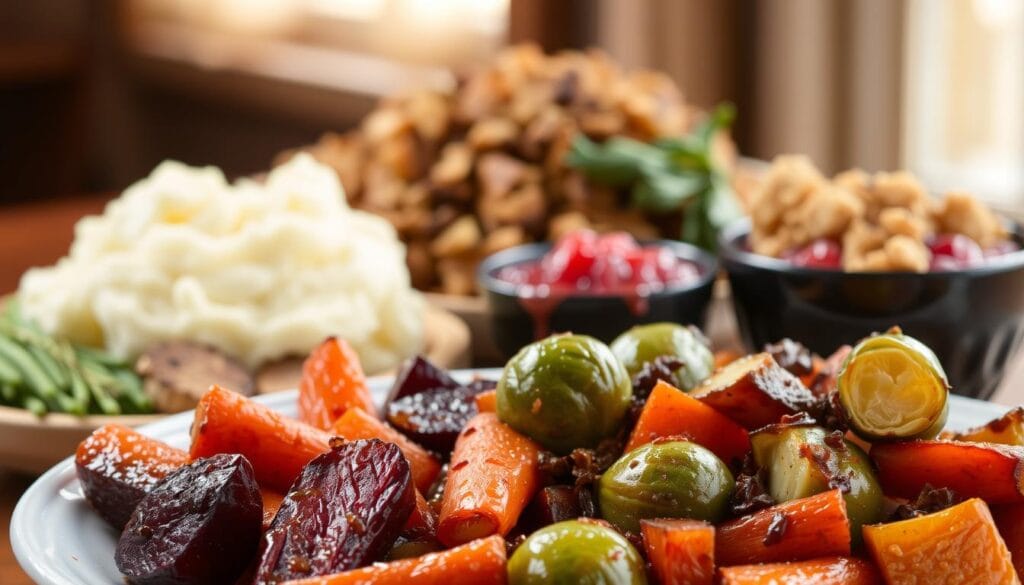
| Side | Texture | Role |
|---|---|---|
| Braised collard greens | Tender-crisp | Cleanse the palate |
| Garlicky grits | Creamy | Mellow richness |
| Buttered corn | Crunchy-sweet | Add sweetness |
Present your creation in a wide bowl to showcase the dish’s layers. Nestle the meat atop fluffy rice in individual bowls, letting sauce cascade down the sides. For family-style meals, use a deep bowl with crusty bread for dipping.
Top with quick-pickled onions for acidity or crispy fried onions for crunch. Chef Edna Lewis once noted:
“A great meal dances between comfort and surprise—let your sides lead that waltz.”
The best way to serve turkey neck involves temperature play—pair warm meat with cool cucumber salad. For gatherings, arrange everything in a large bowl and let guests build their plates.
Tips and Tricks for Perfect Turkey Neck Cooking
Mastering tender results requires smart techniques from start to finish. These pro strategies ensure your efforts yield juicy, flavorful turkey neck recipe every time—whether you’re cooking for tonight or planning leftovers.
Avoiding Tough Meat
Test doneness by inserting a fork sideways into the thickest piece. If it twists easily with slight resistance, you’ve achieved fork tender perfection. Undercooked meat feels rubbery, while overcooked shreds apart.
Low heat breaks down collagen without drying out fibers. Maintain a gentle simmer—rapid boiling toughens proteins. Skim excess fat every 45 minutes to prevent greasiness while preserving richness.
| Issue | Fix | Prevention |
|---|---|---|
| Chewy texture | Simmer 30+ minutes longer | Use meat thermometer (195°F ideal) |
| Bland flavor | Add smoked paprika | Marinate overnight |
| Dry results | Mix in ¼ cup broth | Keep liquid halfway up meat |
Storage and Reheating Tips
Cool leftovers completely before transferring to an home airtight container. Refrigerate for up to 4 days or freeze portions for 3 months. Label with dates to track freshness.
Revive meals by adding 1 tsp sugar and 2 tbsp water when reheating. This balances flavors lost during storage. Warm gently on the stove—microwaving zaps moisture and creates uneven fat distribution.
For frozen batches, thaw in the fridge overnight. Simmer in a covered pan with a splash of broth to restore fork tender texture. Chef Gabrielle Hamilton notes:
“Proper storage turns one great meal into three effortless ones.”
Variations and Adaptations
Make every bite uniquely yours by exploring bold twists on classic preparations. These flexible turkey neck recipes welcome creative adjustments, letting you craft meals that mirror your culinary personality or cultural roots.
Flavor Fusion Across Regions
Swap standard spices for global inspirations. Try smoked chipotle and lime for Tex-Mex flair, or blend ginger and star anise for Asian-inspired depth. Here’s how popular variations compare:
| Style | Key Seasonings | Pairing |
|---|---|---|
| Cajun | Paprika, cayenne, thyme | Cheesy grits |
| Mediterranean | Oregano, lemon zest, garlic | Herbed couscous |
| Asian-Fusion | Five-spice, soy sauce, sesame oil | Jasmine rice |
Reduce sodium by using citrus juices instead of salt. Fresh orange or pineapple adds natural sweetness while keeping flavors vibrant. For smoky undertones without added salt, roast vegetables before adding them to the turkey dish.
Bone-In Benefits & Alternatives
Keep bone-in pieces during cooking for richer broth, then remove them before serving for easier eating. Prefer hands-free meals? Use boneless cuts like turkey thighs with adjusted cook times.
| Modification | Effect | Tip |
|---|---|---|
| No bones | Faster prep | Add collagen powder |
| Extra veggies | Lighter meal | Use zucchini or mushrooms |
| Spice blend swap | New flavor profile | Toast spices first |
Create entirely new recipes by applying these techniques to oxtails or short ribs. As chef Samin Nosrat advises:
“Great cooking isn’t about recipes—it’s about mastering ratios and trusting your palate.”
Conclusion
Transform your kitchen into a flavor lab with these proven techniques. You’ve mastered the art of marinating for depth, searing for texture, and slow simmering for tenderness. Each step builds toward that perfect balance of savory richness and fall-apart goodness to your turkey neck recipe.
From spice blends to broth-building, every detail matters. This method adapts effortlessly—swap herbs for global flair or pair with seasonal sides. Whether hosting friends or fueling weekday meals, the results consistently satisfy.
Ready to make it your own? Share your twist using #ComfortFoodCreations. Tag us to showcase your culinary wins. After all, great cooking thrives on creativity and shared joy.
Gather your ingredients, trust the process, and watch humble cuts become unforgettable centerpieces. Your next family dinner just found its star dish.

